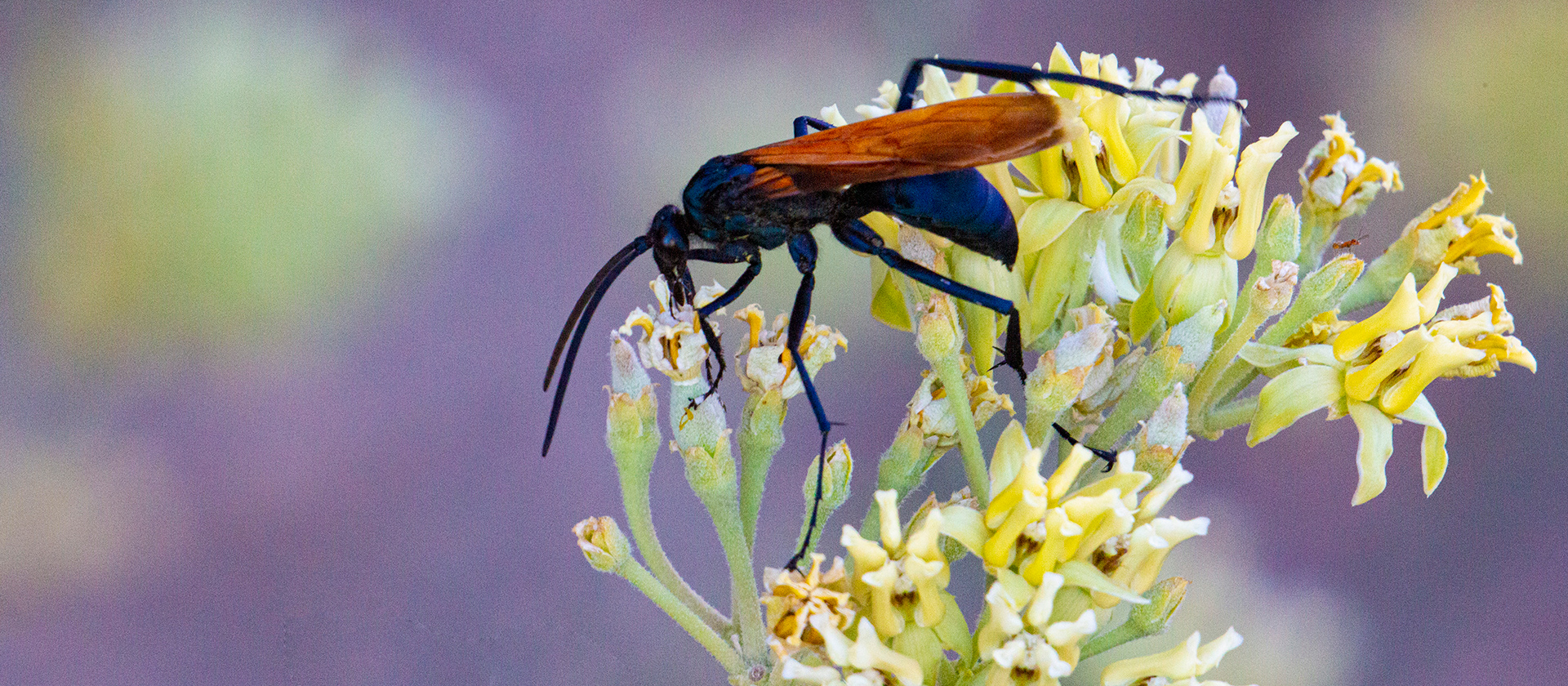The most common creatures found along the Las Vegas Wash are also some of the most misunderstood and underappreciated. Made up mostly of insects, the term ‘macroinvertebrate’ refers to all animals without a defined vertebrae (including crustaceans, mollusks and worms) that are large enough to see with the naked eye. Their abundance and varied sensitivities to environmental changes make them good biological indicators of the health of a body of water or terrestrial ecosystem. With weir installations changing flow dynamics and weed removal and native revegetation changing plant assemblages, understanding the macroinvertebrate community is a great way to determine the health of the Wash.
Links
Benthic macroinvertebrate study
The purpose of the benthic macroinvertebrate study was to determine how erosion control structures and associated wetlands impact the aquatic macroinvertebrate fauna of the Las Vegas Wash. This kick-net survey collected samples from 26 sites along the Wash and its tributaries and analyzed them for the variety and abundance of species collected.
Terrestrial macroinvertebrate studies
In addition to surveys conducted within the water of the Las Vegas Wash, surveys also are conducted to better understand the invertebrates found out of the water. Collections and identifications are made year-round in all types of habitats — emergent vegetation, riparian areas, mesquite bosques and upland desert.
One study compared butterfly populations in areas mostly covered by non-native vegetation (common reed and salt cedar) to areas revegetated with native species. The study showed that areas with native vegetation had higher abundance and diversity of insects than areas dominated by non-native species
Macroinvertebrate studies
| Order | Family | Genus/Species |
|---|---|---|
| Nematoda | Mermithidae | |
| Oligochaeta | Enchytraeidae | |
| Tubificidae | Limnodrilus hoffmeisteri | |
| Lumbriculidae | ||
| Naididae | Nais sp. | |
| Dero sp. | ||
| Pristina sp. | ||
| Turbellaria | Planariidae | Dugesia sp. |
| Nemertea | Hoplonemertea | Prostoma sp. |
| Bivalvia | Veneroidea | Corbicula fluminalis |
| Gastropoda | Physidae | Physella sp. |
| Lymnaeidae | Fossaria sp. | |
| Crustacea | Ostracoda | |
| Cladocera | ||
| Copepoda | ||
| Amphipoda | ||
| Decapoda | Pacifastacus leniusculus | |
| Procambarus clarkii | ||
| Hydracarina | Acari | |
| Odonata: Zygoptera | Coenagrionidae | Argia sedula |
| Enallagma civile | ||
| Ischnura sp. | ||
| Calopterygidae | Hetaerina americana | |
| Odonata: Anisoptera | Aeshnidae | Anax junius |
| Libellulidae | Brechmorhoga mendax | |
| Dythemis sp. | ||
| Macrothemis sp. | ||
| Gomphidae | Erpetogomphus sp. | |
| Ophiogomphus sp. | ||
| Ephemeroptera | Baetidae | Fallceon quilleri |
| Camelobaetidius musseri sp. | ||
| Callibaetis sp. | ||
| Heptageniidae | ||
| Hemiptera | Veliidae | Microvelia sp. |
| Corixidae | Trichocorixa sp. | |
| Notonectidae | Notonecta sp. | |
| Trichoptera | Brachycentridae | Micrasema sp. |
| Glossosomatidae | Glossosoma sp. | |
| Hydropsychidae | Smicridea sp. | |
| Hydropsyche sp. | ||
| Hydroptilidae | Hydroptila sp. | |
| Oxyethira sp. | ||
| Limnephilidae | Ecclisomyia sp. | |
| Coleoptera | Dytiscidae | Neoclypeodytes sp. |
| Elmidae | Heterlimnius sp. | |
| Zaitzevia sp. | ||
| Hydraenidae | Hydraena sp. | |
| Hydrophilidae | Tropisternus sp. | |
| Berosus sp. | ||
| Enochrus sp. | ||
| Staphylinidae | ||
| Lepidoptera | Pyralidae | Petrophila sp. |
| Diptera | Ceratopoginidae | Bezzia sp. |
| Forcipomyia sp. | ||
| Culicidae | Anopheles sp. | |
| Culex sp. | ||
| Dolichopodidae | ||
| Empididae | Hemerodromia sp. | |
| Ephydridae | Notiphila sp. | |
| Muscidae | Limnophora sp. | |
| Psychodidae | Pericoma sp. | |
| Sciomyzidae | Sepedon sp. | |
| Simuliidae | Simulium sp. | |
| Stratiomyidae | Caloparyphus sp. | |
| Euparyphus sp. | ||
| Nemotelus sp. | ||
| Odontomyia sp. | ||
| Tabanidae | ||
| Tipulidae | Antocha sp. | |
| Erioptera sp. | ||
| Limonia sp. | ||
| Ormosia sp. | ||
| Chironomidae | Ablabesmyia sp. | |
| Chironomus sp. | ||
| Cladotanytarsus sp. | ||
| Corynoneura sp. | ||
| Cricotopus (Cricotopus)Group | ||
| Cricotopus (Cricotopus) bicinctus | ||
| Cryptochironomus sp. | ||
| Diamesa sp. | ||
| Dicrotendipes sp. | ||
| Endotribelos sp. | ||
| Eukiefferiella Pseudomontana Group | ||
| Glyptotendipes sp. | ||
| Goeldichironomus sp. | ||
| Labrundinia sp. | ||
| Microtendipes sp. | ||
| Nanocladius sp. | ||
| Nimbocera sp. | ||
| Parachironomus sp. | ||
| Paramerina sp. | ||
| Parametriocnemus sp. | ||
| Paraphaenocladius sp. | ||
| Paratanytarsus sp. | ||
| Paratendipes sp. | ||
| Polypedilum sp. | ||
| Procladius sp. | ||
| Saetheria sp. | ||
| Tanytarsus sp. | ||
| Telmatopelopia sp. | ||
| Thienemanniella sp. | ||
| Thienemannimyia sp. |
